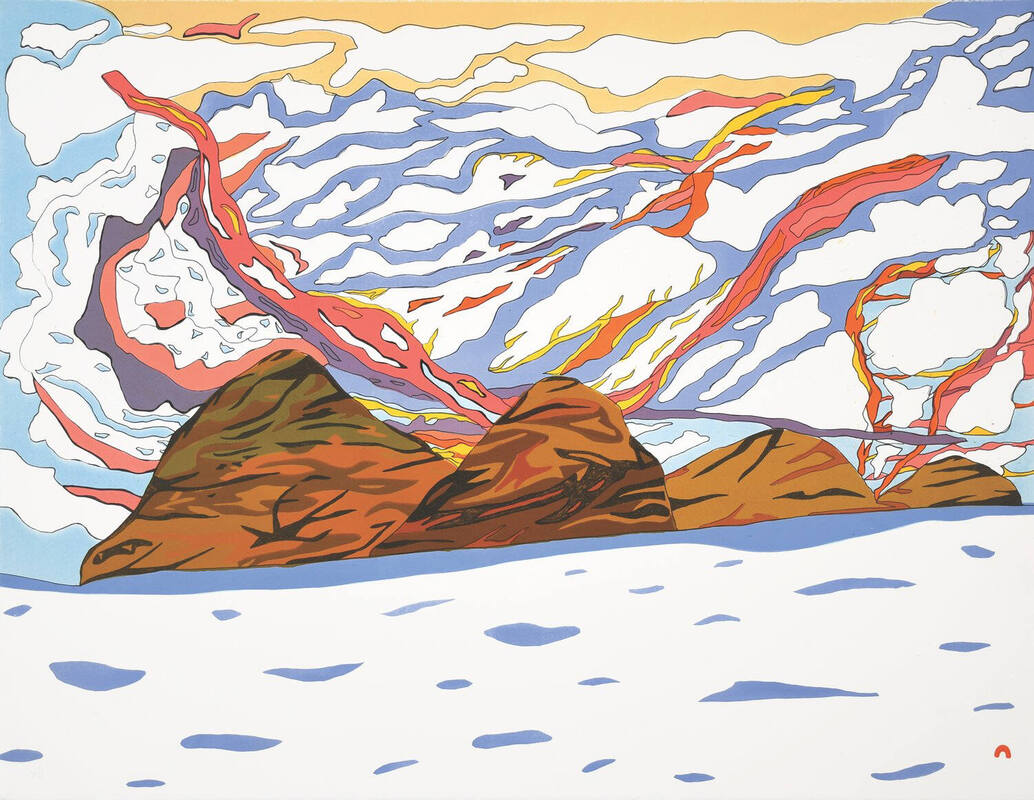Inuit take the lead in Inuit Studies conference
“Inuit are now leading our own research and are able to present our own findings.”

A look at what you will find during this week’s Inuit Studies Conference in Montreal reveals the striking evolution of this event from its start in 1976.
Presentations at the 34th edition of the conference, which gets underway on Thursday, now mainly feature Inuit, rather than southern researchers.
And they’re talking about issues important to Inuit, such as education, health, language, governance, housing, identity, art and urban life.
The all-Inuit list of keynote speakers includes political and cultural leaders: Lisa Koperqualuk, Alethea-Arnaquq Baril, Dalee Sambo Dorough, Ruth Kaviok, Natan Obed and Aaju Peter.
Since the first Inuit studies conference in Quebec City, this event has alternated between Arctic communities and cities in the south, meeting in Fairbanks, Alaska, in 1990, in Iqaluit in 1994, in Paris in 2006, and St. John’s in 2016.
A notable change has occurred since the 1996 Inuit Studies conference at Memorial University in St. John’s: it was fraught with tension as Inuit participants Peter Irniq and Martha Flaherty contested the right of non-Inuit researchers to talk about such subjects as shamanism or sled dogs and accused some of using Inuit traditional knowledge for their own ends.
Reflecting the change, this year’s conference is likely to end on Sunday with a new name for future gatherings.
Bernard Saladin d’Anglure, the president of the Association Inuksiutiit Katimajiit Inc., the group behind the conferences and Études/Inuit/Studies journal, wrote in 2017 that, in keeping with the processes of reconciliation now taking place in Canada, it seemed important to overhaul the way the journal and conference have been managed.
“The word ‘studies’ has negative connotations for many Inuit as it harkens back to the days when Inuit were put on display or studied as curiosities,” Nunatsiavut researcher Heather Campbell said in the conference schedule, referring to Saladin d’Anglure’s comments.
“This is especially true for Inuit from Nunatsiavut who were taken to Europe during the early contact period, or lured into participation in the 1918 World’s Fair for example.”
Campbell will lead a roundtable on Sunday that will explore possible name changes for the conference and the proposed Inuit Research Network and Inuit Quajimajatuqangit or IRNIQ.
Research on Inuit has increased with time so that in 2011, for every three Inuit, there was one publication or dissertation, Campbell said.
“A name change would better reflect the fact that Inuit are now leading our own research and are able to present our own findings. We are no longer just subjects of study,” Campbell said in the abstract on the roundtable.
Before that Sunday afternoon roundtable, there is much to see and do at the four-day conference, as outlined in the online schedule.
There are four separate venues at the conference, with two simultaneous events often taking place and several off-site events, as well as an arts and crafts fair, book fair, a Labrador slipper-making workshop, performances and two book launches.
Thursday includes “Pisulaurtaa! Let’s go for a walk!” from 10 a.m. to noon, when Christopher Fletcher and Annie Pisuktie will lead a walking tour of downtown Montreal, with stops and commentary about places of importance to Inuit in the city. The evening brings the Inuit Blanche gallery crawl, which takes place at arts institutions throughout the downtown to celebrate Inuit art and culture.
Among the nearly 160 sessions:
- A half-day panel on urban Inuit realities, featuring themes such as identity, cultural loss and revitalization, representation and community organization, will feature Stephen Puskas, Jason LeBlanc, Joshua Stribbell, Nikita Larter, Maxine Angoo, Lisa Watt, Annie Pisutkie, Tina Pisuktie, Jenna Joyce Broomfield, Amanda Kilabuk, Nicole Parsons, Jessie Kangok and Janet Evvik.
- Bringing it Back: the Reclamation of Inuit Digital Collections, Archives and Knowledge, will include presentations relating to digital projects such as Pitquhirnikkut Ilihautiniq’s Inuinnait parka project.
- Nunavut Tunngavik Inc. President Aluki Kotierk and Louis Tapardjuk, a former Nunavut cabinet minister who is chair of Inuit Uqausinginnik Taiguusiliuqtiit, Nunavut’s language authority, will speak about Inuktut as a human right.
- Louis-Jacques Dorais, a linguist well-known in Nunavik and Nunavut, will look behind the meaning of Inuktut words, such as angakkuq (shaman), tuurngaq (helper spirit), qaumaniq (shamanic knowledge) and qilaut (shaman’s drum.)